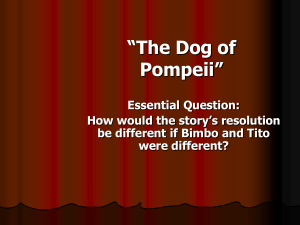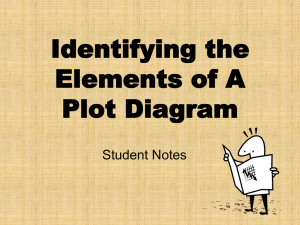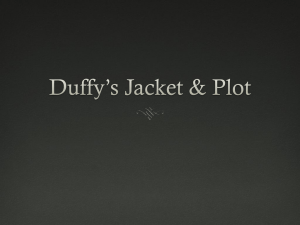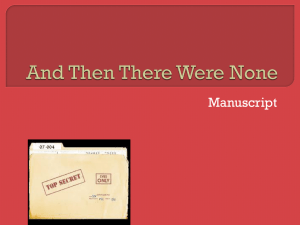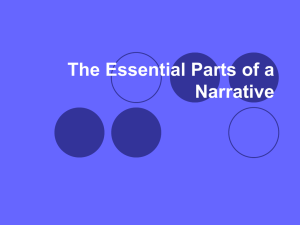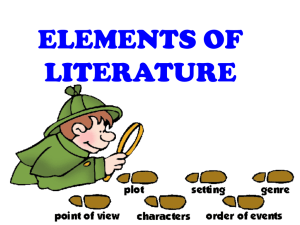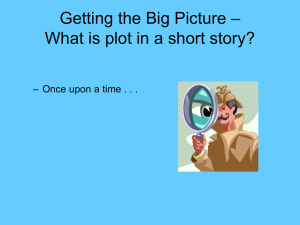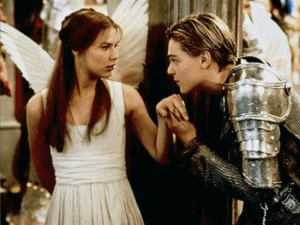LiteraryTerms
advertisement
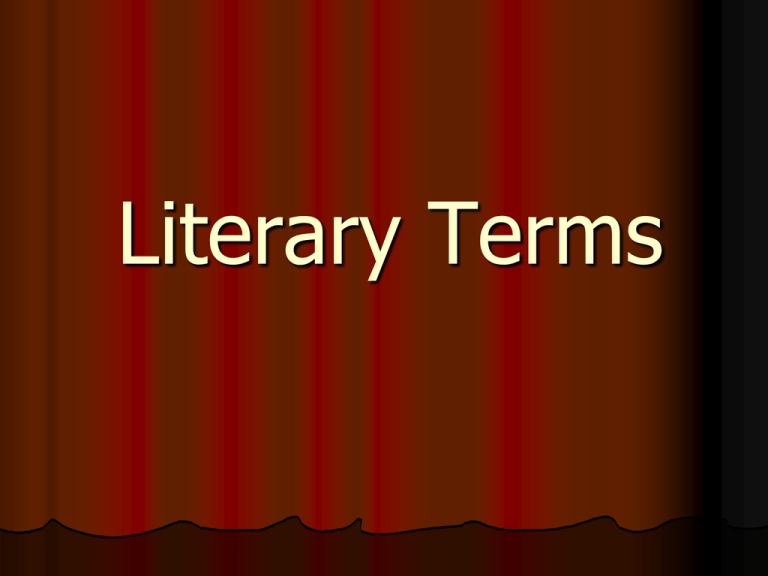
Literary Terms We will use the following terms: Character Diction Imagery Exposition Falling Action Flashback Point of View Theme Metaphor Personification Antagonist Denotation Mood Rising Action Resolution Foreshadowing Setting Tone Simile Alliteration Protagonist Connotation Plot Climax Conflict Suspense Style Figures of Speech Oxymoron Character A character is a person or an animal that takes part in the action of a literary work. Antagonist An antagonist is a character or force in conflict with a main character, or protagonist. Now you know why people use the saying “Don’t antagonize me!” Protagonist The protagonist is usually the main character in a literary work The antagonist is in conflict with the protagonist or, main character. FAMOUS PROTAGANITS AND ANTAGONITSTS Let’s take a moment to think of some famous antagonists and protagonists that we can recall from movies, television shows, books and video games List five of each on your note paper Setting The setting is the time and place of the action. May include all the details of a place and time – the year, the time of day, even the weather. The place may be a specific country, state, region, community, neighborhood, building, institution, or home. Details such as dialect, clothing, customs, and modes of transportation are often used to establish setting. In most stories, the setting serves as a backdrop – a context in which the characters interact. The setting of a story often helps to create a particular mood, or feeling. Exposition The exposition is the introduction. It is the part of the work that introduces the characters, setting, and basic situation. Plot The plot is the sequence of events. The first event causes the second, the second causes the third, and so forth. In most novels, dramas, short stories, and narrative poems, the plot involves both characters and a central conflict. The plot usually begins with an exposition that introduces the setting, the characters, and the basic situation. The conflict then increases until it reaches a high point of interest or suspense, the climax. The climax is followed by the falling action, or end, of the central conflict. Any events that occur during the falling action make up the resolution. PLOTLINE Climax Resolution Exposition Conflict Introduced Conflict Conflict is the struggle between opposing forces in a story or play. There are two types of conflict that exist in literature. Internal Conflict Internal conflict exists within the mind of a character who is torn between different courses of action. Man vs. Himself External Conflict External conflict exists when a character struggles against some outside force, such as another character, nature, society, or fate. Man vs. Man Man vs. Nature Rising Action Rising action is the part of the plot that begins to occur as soon as the conflict is introduced. The rising action adds complications to the conflict and increases reader interest. Suspense Suspense is the growing interest and excitement readers experience while awaiting a climax or resolution in a work of literature. It is a feeling of anxious uncertainty about the outcome of events. Writers create suspense by raising questions in the minds of their readers. Climax The climax is the point of greatest emotional intensity, interest, or suspense in the plot of a narrative. The climax typically comes at the turning point in a story or drama. Falling Action Falling action is the action that typically follows the climax and reveals its results. Resolution The resolution is the part of the plot that concludes the falling action by revealing or suggesting the outcome of the conflict. THEME The THEME is central idea or ideas explored in a literary work. It is the the general subject of a work of literature. Literature may have more than one theme. Sarah Plain and Tall , for example, deals with patience, hope and love. Finding Nemo, deals with courage, friendship and faith.
